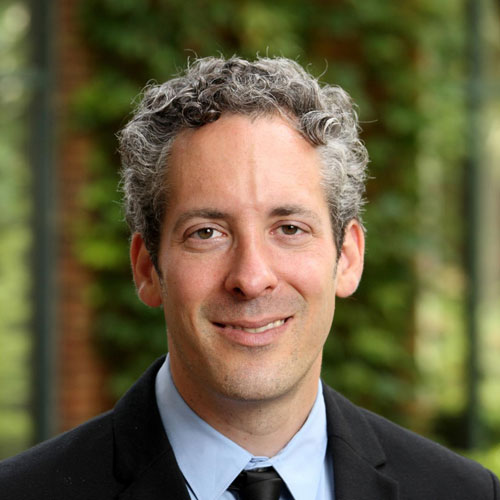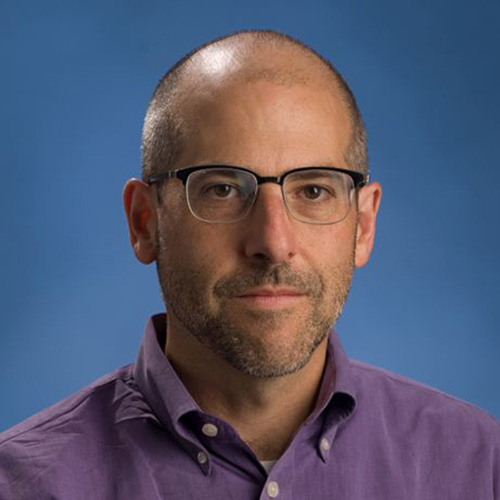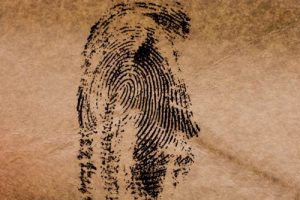Overarching GOALS
As new probabilistic and statistical methods are developed they must be implemented by the forensic community. CSAFE is focused on research to facilitate the implementation of methods and identify best practices for their use. Relevant research topics include finding optimal ways to communicate statistical conclusions –– both verbally and graphically, understanding the barriers to widespread implementation, and best practices for forensic practitioners, lawyers and judges.
Looking for
WEBINARS,
Short courses, presentations or publications
on Implementation and Practice?
Additional Team Members
Susan Vanderplas
susan.vanderplas@unl.edu
Nita Farahany
farahany@duke.edu
Gregory Mitchell
greg.mitchell@law.virginia.edu
Hal S. Stern
sternh@uci.edu
Robert Ramotowski
robert.ramotowski@nist.gov
Robert Thompson
robert.m.thompson@nist.gov
Dan Murrie
murrie@virginia.edu
Sharon Kelley
smk8n@virginia.edu
Nicholas Scurich
nscurich@uci.edu
Adele Quigley-McBride
aquigley@sfu.ca
Jennifer Teitcher
jennifer.teitcher@duke.edu
Kori Khan
kkhan@iastate.edu
focus Areas
Statistical evidence can be presented to attorneys, judges and jurors in a range of ways, from verbal descriptions of the weight of evidence to numerical scores to more complicated statistical summaries. CSAFE researchers are conducting studies with various forms of testimony and conclusions to determine if these new forms of testimony are better suited to minimize misinterpretation.
The goal of this project is to better understand how to convey forensic information to laypeople in a way that is accurate and comprehensible. Our research focused initially on terms used to convey forensic conclusions and how jurors understand them. We have studied how to convey proficiency and error rate information and begun to move towards more detailed mock trial scenarios — such as studies of competing experts testifying at trial.
First, in our new work, we need to better understand as a foundational matter what informs jurors regarding the strengths and limits of forensic evidence. Our prior work has given us an initial picture of this problem. In the next set of studies, we need more realistic designs and we need to keep up with developments in the field. We will examine new ways of conveying forensic information to lay jurors as the field moves towards new standards for terminology, including as developed by OSAC, and in some settings, the use of quantitative methods and conclusions. We are also moving towards more detailed designs, including with videos of mock courtroom testimony, and perhaps jury deliberation, to make for more realistic studies. We will examine what explains the varying weight that laypeople place on forensic testimony to better understand how to explain the strengths and limits of that evidence to them.
Second, we need to study new interventions that might change how laypeople evaluate forensic evidence. We will examine newly developed language, such as terminology developed by OSAC, language required by judges in their rulings, and its impact on lay decisionmakers. We need to study what effect jury instructions might have on visual presentations. Relatedly, in addition to studying lay decisionmaking, we will also assess what lawyers currently understand (and do not understand) about the evidence forensic experts currently present (or may, in the future, choose to present) in reports and testimony, so that we can better assess the role that lawyers play in presentation of forensic evidence. Similarly, we will survey judges to better understand their role and needs in this process (as also discussed in ED II). Research on how lawyers understand and misunderstand the language in forensic science reports may help forensic scientists develop more effective reporting language. And this work may help identify undesirable courtroom practices that might mislead jurors and help inform policy regarding how lawyers should conduct themselves at trial. Ultimately, we plan to develop model training for defense lawyers and judges that will also be of value to forensic scientists as they prepare for testimony and interact with legal professionals.
Third, based on this research, we will develop recommendations for how to better convey strengths and limits of forensic evidence in testimony, to inform new standards for such testimony. We will also develop recommendations for judicial instructions and evidentiary standards regarding forensic conclusions. Finally, we will make recommendations for work that defense lawyers and prosecutors can do to better educate jurors regarding strengths and limits of forensic evidence.
It is a key goal of CSAFE to better understand the impediments to adoption of probabilistic methods among forensic science practitioners and members of the legal community, so that they can be overcome and probabilistic methods can be effectively implemented. It is important to study attitudes of practitioners towards probabilistic analyses including both the benefits and disadvantages that they perceive. CSAFE researchers achieve this insight through surveys, interviews and observations of forensic practitioners in order to assess obstacles and methods to overcome them.
To be useful, the statistical applications developed by CSAFE will have to be adopted by forensic scientists and forensic service providers (FSPs). It is well-known that many forensic scientists and FSPs are skeptical, or even resistant, to the adoption of statistical applications. To facilitate the adoption of statistical applications, we need a better understanding of the organizational cultures of the FSPs that we hope will adopt them. Such understanding can be facilitated by a sociology of forensic science. Further, we also need a better sociological understanding of the discipline of forensic statistics. Many non-statisticians profess themselves bewildered by forensic statistics. While forensic statistics has made efforts to account for itself, it will be helpful to complement these with a sociological account, from an external perspective, about the discipline. An account that locates forensic statistics in its historical and sociological context can only enhance non-statisticians’ understanding of the discipline and nature of the applications it is seeking to implement.
Sociology of science is a well-established discipline that uses the tools of the social sciences to understand the making of scientific knowledge. While most work in sociology of science has focused on more traditional academic disciplines, like physics, biology, medicine, and engineering, there has long been a thriving line of research on forensic science. Sociologists of science are particularly drawn to forensic science because of its proximity to law, which brings two powerful truth-making social institutions (science and law) into close contact.
While there has been some work on the sociology of forensic science, there has been almost no work on the sociology of forensic statistics.
By sociologically analyzing the impact of statistical application on forensic laboratories and the reactions of forensic scientists to statistical applications, the project will allow forensic scientists to progress from a “local” perspective informed by their own experiences and personal interactions to a more “global” perspective informed by the experiences of the discipline as a whole with statistical applications.
The research will draw on the standard tools in the sociology of science. These include social scientific methods, such as interviews, participant-observation and ethnography, as well as methods drawn more from history of science, such analyses of scholarly debates conducted through published literature.
Knowledge Transfer
Page 5 of 5
The Proficiency of Experts
Type: Publication Research Area(s): Implementation and Practice
Published: 2017 | By: Brandon Garrett
Expert evidence plays a crucial role in civil and criminal litigation. Changes in the rules concerning expert admissibility, following the Supreme Court’s Daubert ruling, strengthened judicial review of the reliability and the validity of an expert’s methods. Judges and scholars,…
Comparing Categorical and Probabilistic Fingerprint Evidence
Type: Publication Research Area(s): Implementation and Practice,Latent Print
Published: 2018 | By: Brandon Garrett
Fingerprint examiners traditionally express conclusions in categorical terms, opining that impressions do or do not originate from the same source. Recently, probabilistic conclusions have been proposed, with examiners estimating the probability of a match between recovered and known prints. This…
The Myth of the Reliability Test
Type: Publication Research Area(s): Implementation and Practice
Published: 2018 | By: Brandon Garrett
The U.S. Supreme Court’s ruling in Daubert v. Merrell Dow Pharmaceuticals, Inc., and subsequent revisions to Federal Rule of Evidence 702, was supposed to usher a reliability revolution. This modern test for admissibility of expert evidence is sometimes described as…
Introduction: Forensics Fail?
Type: Publication Research Area(s): Implementation and Practice
Published: 2018 | By: Brandon Garrett
This year marks the 25th anniversary of the U.S. Supreme Court’s decision in Daubert v. Merrell Dow pharmaceuticals, inc., which fundamentally reshaped how judges evaluate scientific and expert evidence.1 this volume of judicature, with three wonderful contributions by Jay Koehler,…
Explaining Source Conclusions to a Lay Audience
Type: Webinar Research Area(s): Implementation and Practice
This CSAFE Center Wide Meeting Webinar was presented by Dr. William (Bill) Thompson from University of California, Irvine on November 30, 2017. Description: Forensic scientists are often asked to evaluate whether two items have (or might have) a common source.…
Forensic Pattern Recognition Evidence-An Educational Module
Type: Short Courses Research Area(s): Implementation and Practice,Latent Print,Training and Education
This learning module (and associated instructor's guide) was developed by CSAFE researcher and criminology, law, and society professor from University of California, Irvine Dr. Simon Cole. The educational opportunity uses latent print identification as a case study of the broader…
Changed Science Statutes: Can Courts Accommodate Accelerating Forensic Scientific and Technological Change?
Type: Publication Research Area(s): Implementation and Practice
Published: 2017 | By: 2017
In the past several years, the nation’s two most populous states have passed new statutes specifically intended to address the issue of rapidly changing scientific and technological knowledge, perhaps signaling a national trend. This reflection article situates a discussion of…
Evaluating Negative Forensic Evidence: When Do jurors Treat Absence of Evidence as Evidence of Absence?
Type: Publication Research Area(s): Implementation and Practice
Published: 2017 | By: William C. Thompson.
The Crime Lab in the Age of the Genetic Panopticon
Type: Publication Research Area(s): Implementation and Practice
Published: 2017 | By: Brandon Garrett
Review of Unfair: The New Science of Criminal Injustice by Adam Benforado, Inside the Cell: The Dark Side of Forensic DNA by Erin E. Murphy, and Cops in Lab Coats: Curbing Wrongful Convictions Through Independent Forensic Laboratories by Sandra Guerra…
“Brief of Amici Curiae Brandon L. Garrett and 35 Scientists, Statisticians, Law and Science Scholars, and Practitioners, People v. Genrich, No. 2016CA651”
Type: Publication Research Area(s): Implementation and Practice
Published: 2017 | By: Brandon Garrett
In this case, a toolmark “expert” testified against James Genrich by assuring the jury that several of Genrich’s tools made purportedly unique marks on fragments of the bombs recovered from the crime scene, “to the exclusion of any other tool”…
Constitutional Regulation of Forensic Evidence
Type: Publication Research Area(s): Implementation and Practice
Published: 2018 | By: Brandon Garrett
In this Essay, I describe how despite decades of missed opportunities to adequately regulate forensics, in recent rulings the Supreme Court and lower courts increasingly focus on sound litigation of forensics. In an era of plea bargaining, the accuracy of…
Page 5 of 5
COMMUNITY CALL-TO-ACTION
Want to collaborate with CSAFE on a project. Contact us to share your idea.







